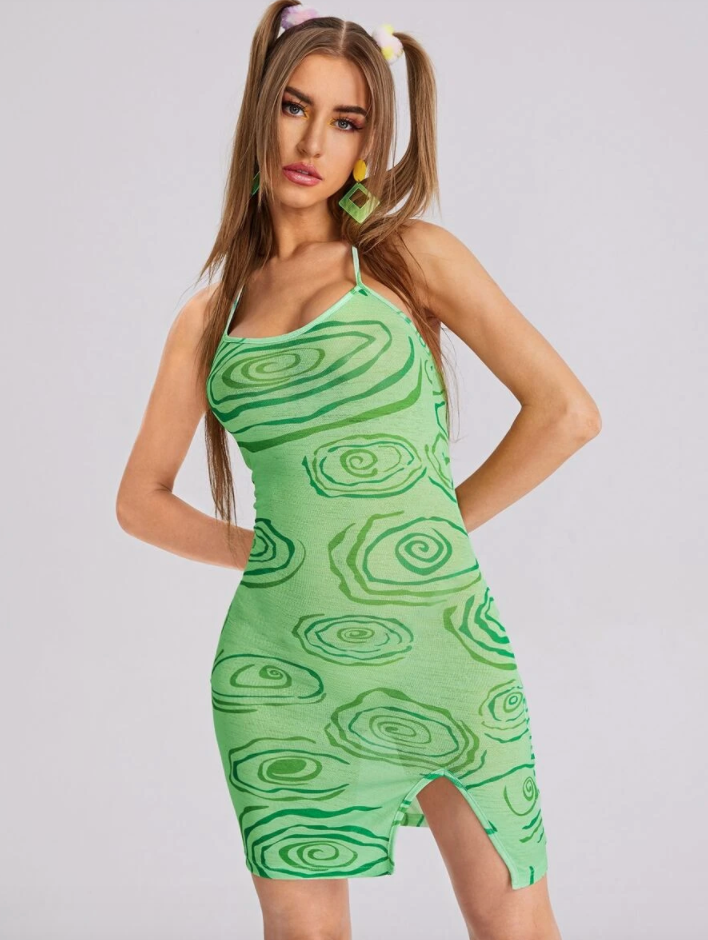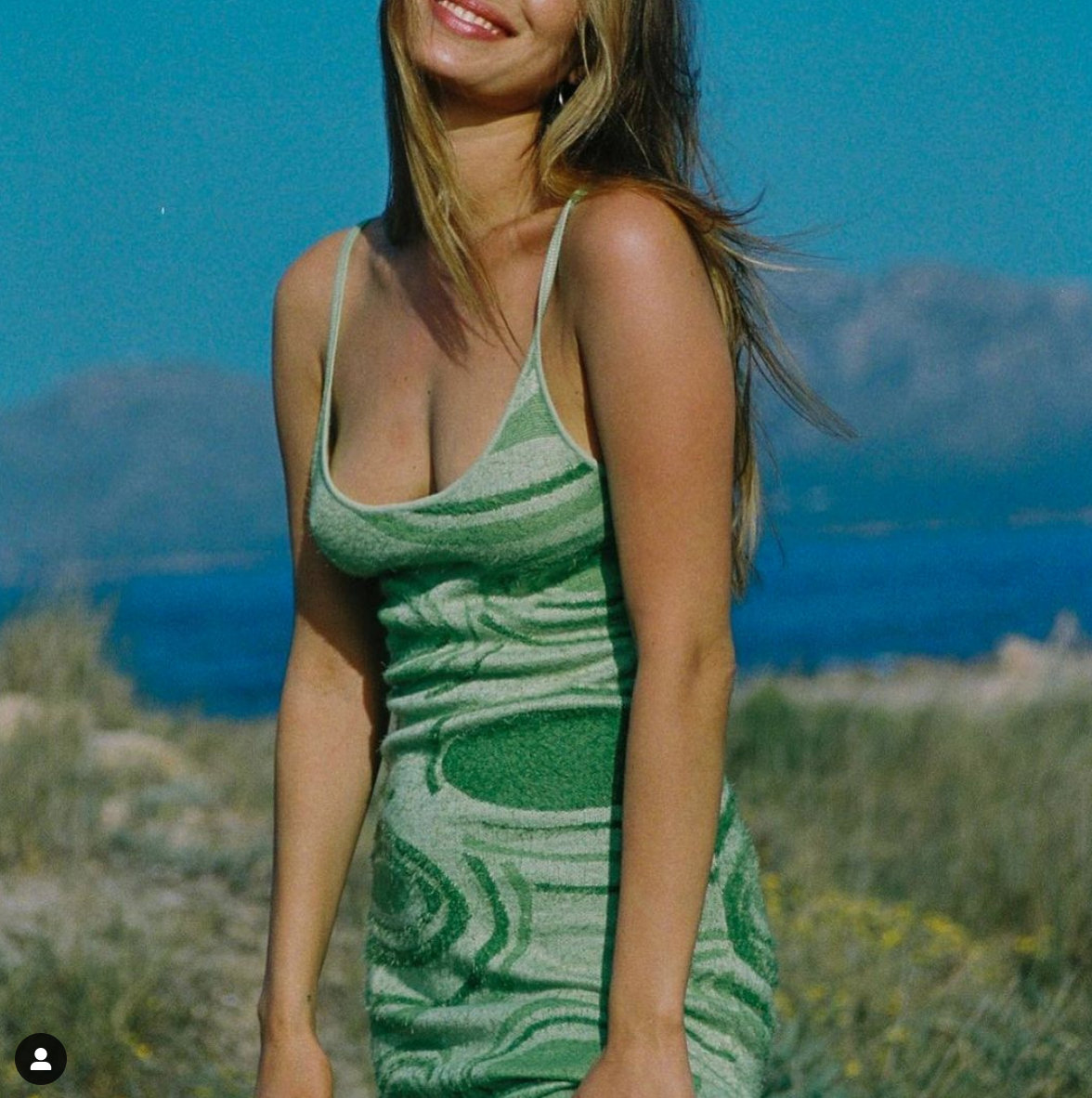MICROTRENDS AND THE REVIVAL OF FAST FASHION
by Kristin Merrilees
The other day, as I spent yet another day trying (and failing) to keep my TikTok obsession in check, I became acquainted with the concept of the “microtrend.” Having been introduced to the term from my favorite fashion TikTokers, I was excited to learn that my best friend, Molly, had actually recorded a short podcast episode on microtrends. She defines a microtrend as “something that’s in for a really brief period of time, so it can either be a piece of clothing, an accessory… a trend in the fashion world.”
What’s deemed “fast fashion,” in which clothing items are, as Molly describes, “in for a little bit, and then quickly out,” is nothing new. I grew up shopping at Forever 21, Zara, and H&M, which are known to produce trendy clothing extremely quickly, making them inexpensive but also low-quality. But for a few years, sustainable consumption has gained appeal for fashion, environmental, and ethical reasons alike. Just think about how popular thrifting has become in the past few years, right?
But in the past year or so, I think that fast fashion has once again begun to fill up our closets, and our Instagram feeds. Only this time, instead of going to buy it from our neighborhood mall’s Forever 21, we are buying it online, either from retailers such as Shein or on Depop.
It’s pretty clear that the source of this renewed frenzy over cheap, trendy items is social media. On TikTok, specific items and styles can gain and lose popularity extremely fast, thus accelerating the fashion cycle and creating a constant revolving door of microtrends. Perhaps the most notorious microtrend on TikTok, and social media as a whole, is a green knit dress from House of Sunny, which quickly gave rise to similar patterns and knock-offs on Shein and AliExpress.
An image of the “Hockney Dress” ($116.20) on the House of Sunny Instagram and the “Allover Print Halter Neck Bodycon Dress” ($8.00) on ROMWE
Other recent microtrends include pink cheetah print, halter dresses, argyle sweater vests, pink cheetah print, and V-neck silk tank tops. In addition to TikTok and Instagram, these trends often amass popularity through Pinterest, everyone’s favorite platform for outfit inspiration. On Pinterest, a trend will pop up one day and be on everyone’s outfit boards the next. The greater rise and proliferation of “aesthetics” — cottagecore, Y2K, indie, etc. — also creates a constant output of things one must have to remain cool and on-trend.
With our increased reliance on social media, especially when it comes to discovering new things, I think there’s also an increasing reliance on “the algorithm” (whether that be our Pinterest boards, TikTok For You Page’s, or Instagram feeds) to shape whatever it is we are going to be wearing, watching, eating, and listening to next.
When it comes to fashion, the normal evolution of style from one decade, one year, one season to the next has sped up and mutated to a level that is virtually impossible to keep up with. Social media has created a constant need to be “on trend” and to always have whatever the “new cool thing” is. This is extremely difficult — and not to mention, exhausting when a new cool thing — or even an entire aesthetic — pops up seemingly every day.
“Fast” versus “sustainable” fashion is often a complex and even controversial topic, especially as fast fashion is generally much more affordable than sustainable or ethically-produced clothing (and there is also a lot of disagreement and debate as to what “sustainable” and “ethical” clothing means, or if it even exists). But with the existence of thousand-dollar Shein haul videos, which suggest that the purchaser does have the means to afford more sustainable clothing, and fast fashion items being bought in bulk and sold marked-up to make a profit on Depop, it is clear that our reliance on fast fashion as a means of keeping up with trends is in large part a reflection of our tendency to over-consume. In other words, we often constantly buy new, cheaply-made items not out of an organic need or want for them, but out of a desire to keep up with trends. Not only is this environmentally and ethically harmful, but I think it also robs fashion of its ability to be used for self-expression and individuality.
On the internet, we are exposed to new ideas, trends, and items on a daily basis. It seems we have internalized a philosophy that we need to constantly keep up with new trends and buy new items to be cool or fashionable. But in reality, this hyper-digital overconsumption can make us unhappy and prevent us from growing in and developing our personal style. While buying fast fashion and posting all our new outfits on the ‘gram may give us ephemeral bursts of dopamine, it is ultimately unsustainable and unfulfilling in the long run.
I think that as we begin to realize just how exhausting participating in fast fashion can be, as well as unsustainable and unethical, there will be an increased interest in developing our individual style. Personally, I’ve tried to gravitate away from fast fashion and focus on becoming more confident in my own tastes and style. And even though I sometimes feel stuck or out-of-trend in what I wear, I think taking that first step has been so worth it. I’m embarking on a fashion journey in which I, not my algorithms, are in control.

